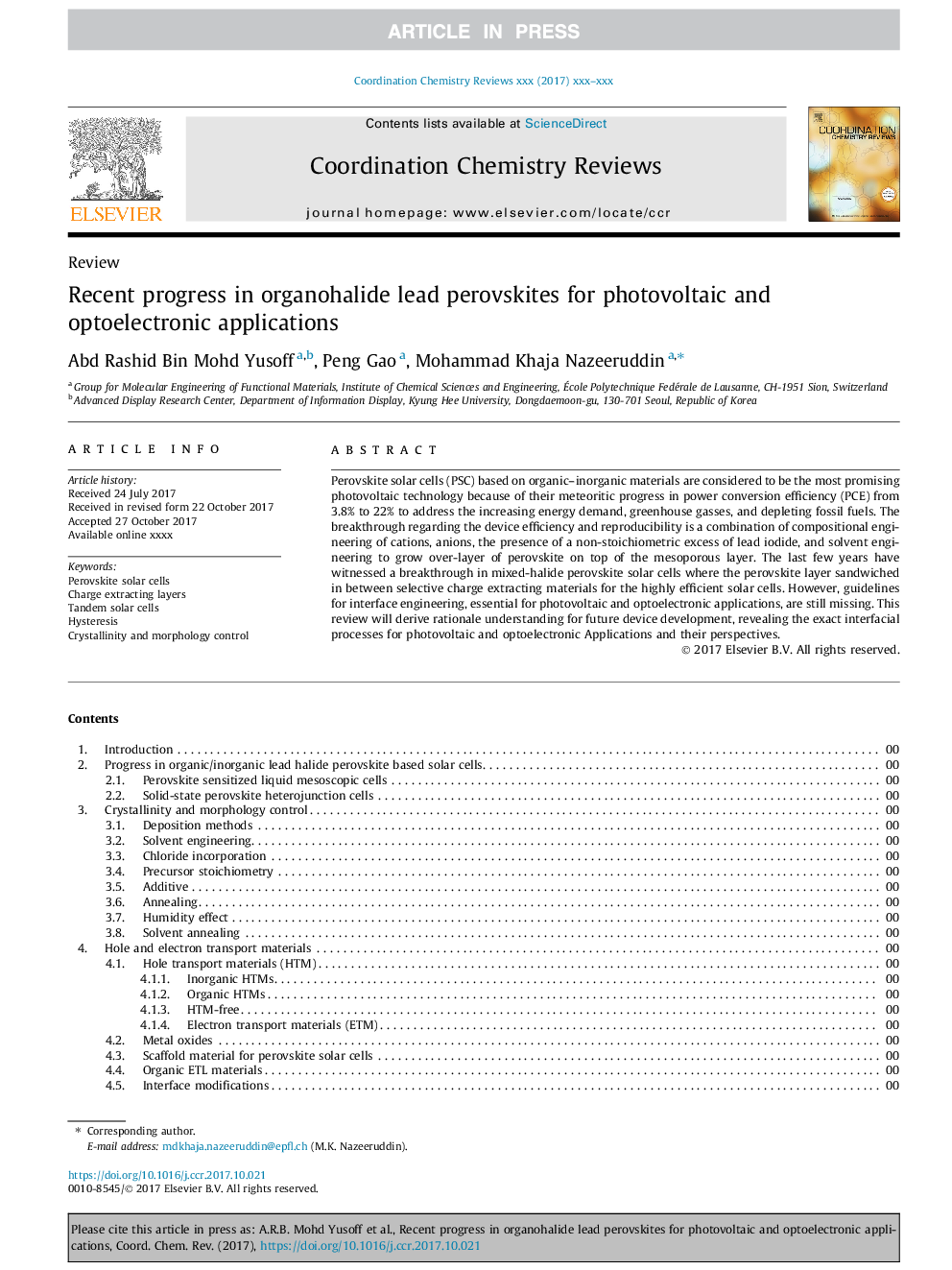| Article ID | Journal | Published Year | Pages | File Type |
|---|---|---|---|---|
| 8942867 | Coordination Chemistry Reviews | 2018 | 37 Pages |
Abstract
Perovskite solar cells (PSC) based on organic-inorganic materials are considered to be the most promising photovoltaic technology because of their meteoritic progress in power conversion efficiency (PCE) from 3.8% to 22% to address the increasing energy demand, greenhouse gasses, and depleting fossil fuels. The breakthrough regarding the device efficiency and reproducibility is a combination of compositional engineering of cations, anions, the presence of a non-stoichiometric excess of lead iodide, and solvent engineering to grow over-layer of perovskite on top of the mesoporous layer. The last few years have witnessed a breakthrough in mixed-halide perovskite solar cells where the perovskite layer sandwiched in between selective charge extracting materials for the highly efficient solar cells. However, guidelines for interface engineering, essential for photovoltaic and optoelectronic applications, are still missing. This review will derive rationale understanding for future device development, revealing the exact interfacial processes for photovoltaic and optoelectronic Applications and their perspectives.
Related Topics
Physical Sciences and Engineering
Chemistry
Inorganic Chemistry
Authors
Abd Rashid Bin Mohd Yusoff, Peng Gao, Mohammad Khaja Nazeeruddin,
